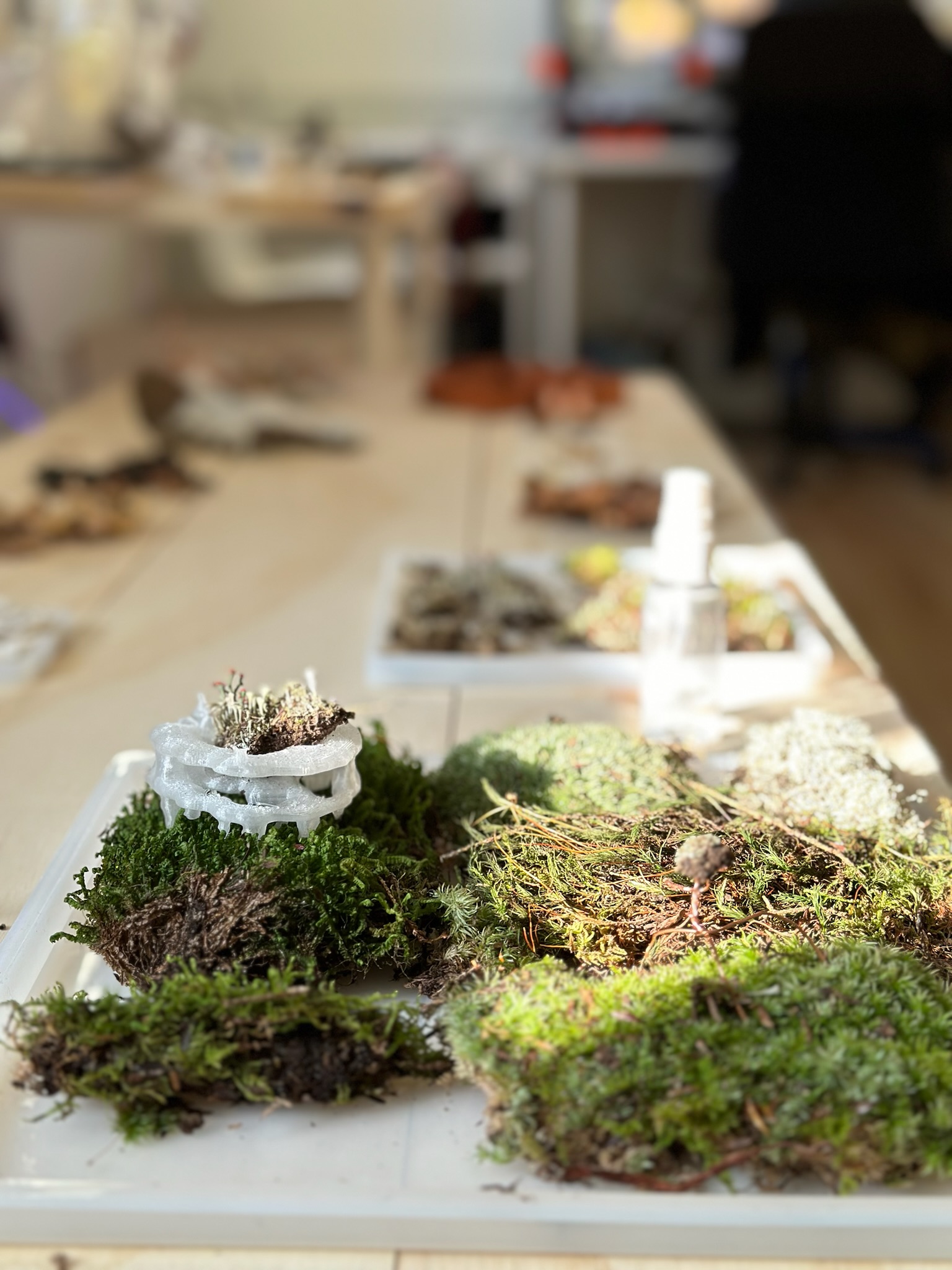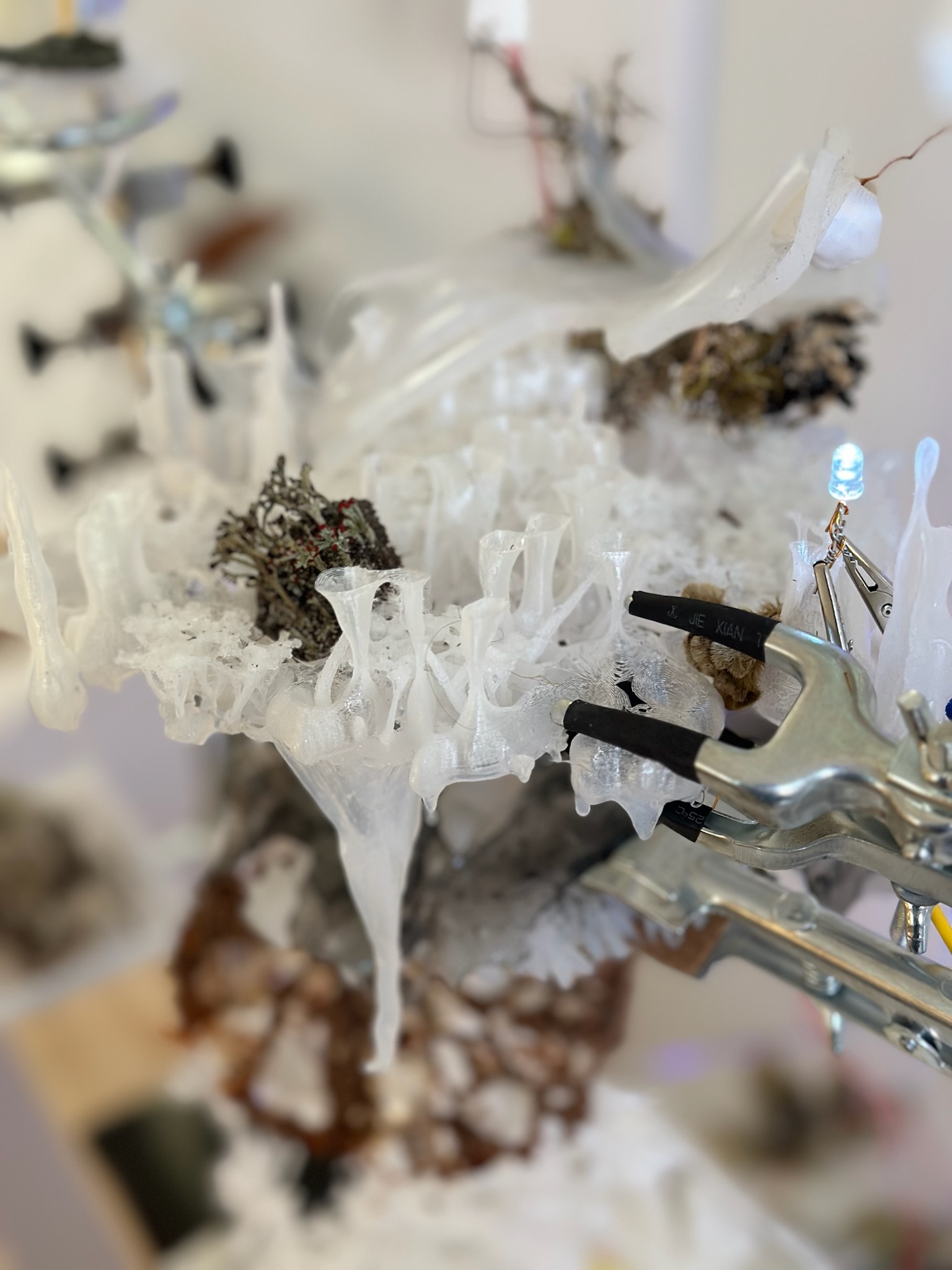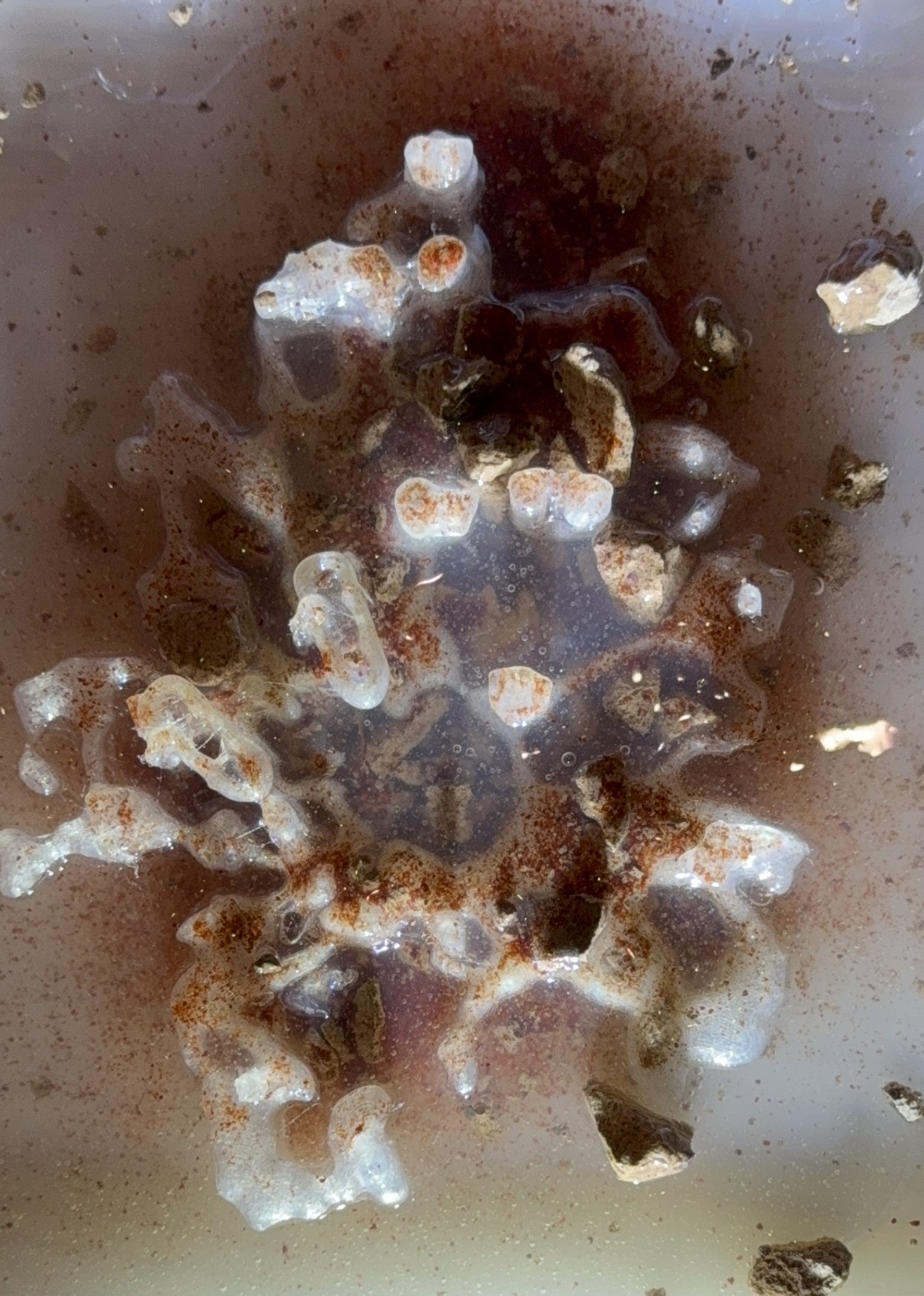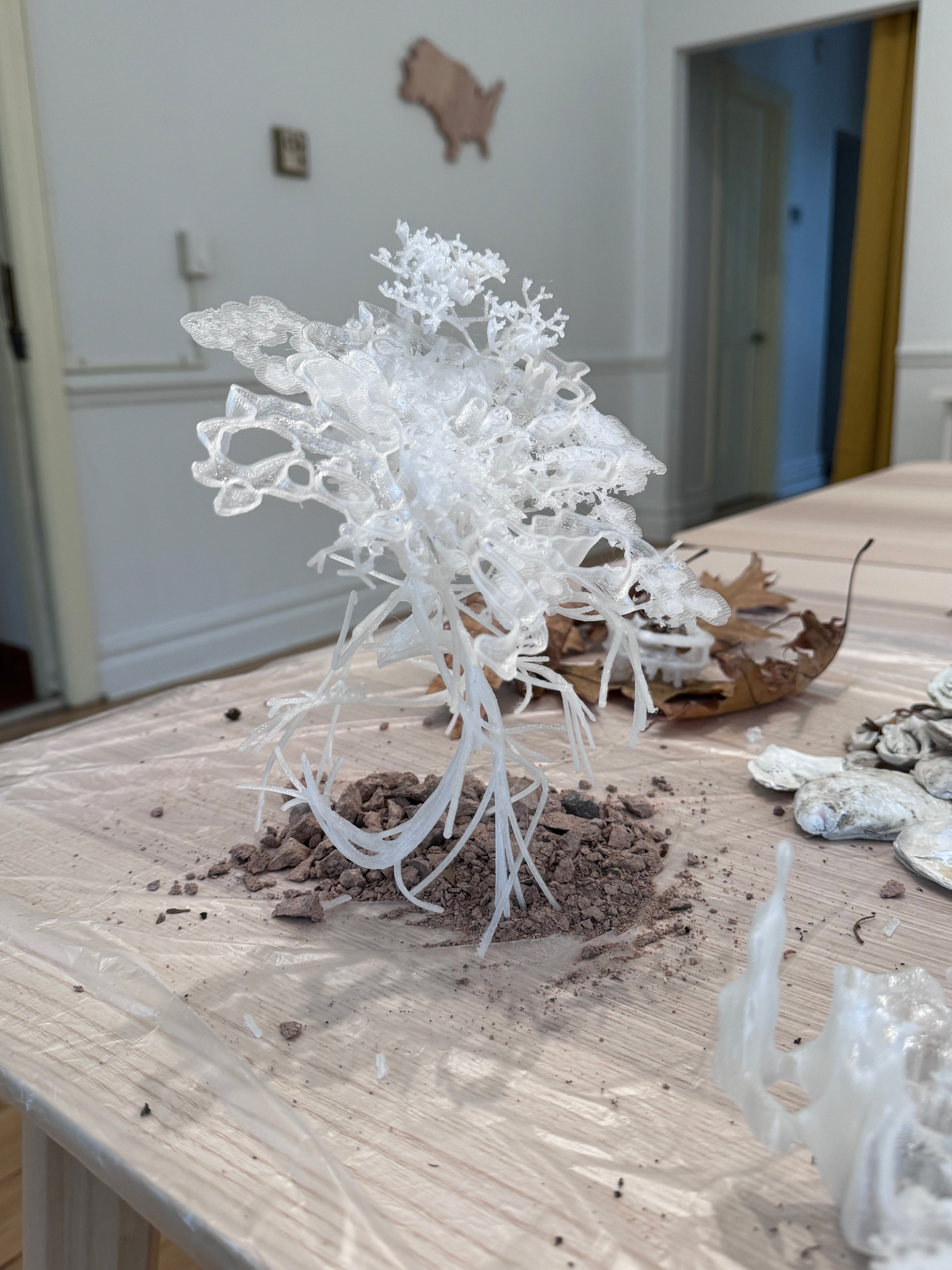Lichenized Biosystems
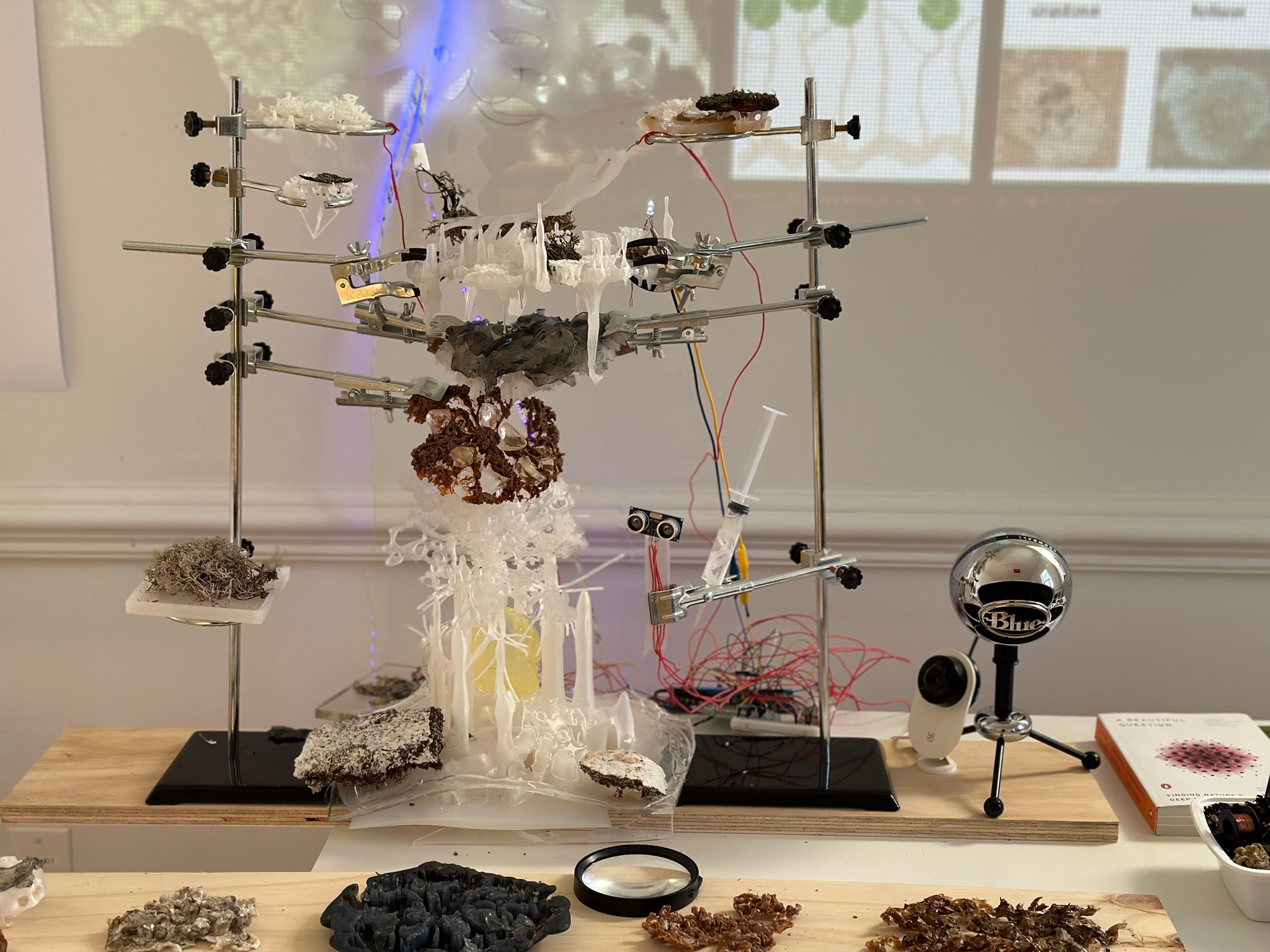
Luz Wallace
School of Continuing and Professional Studies
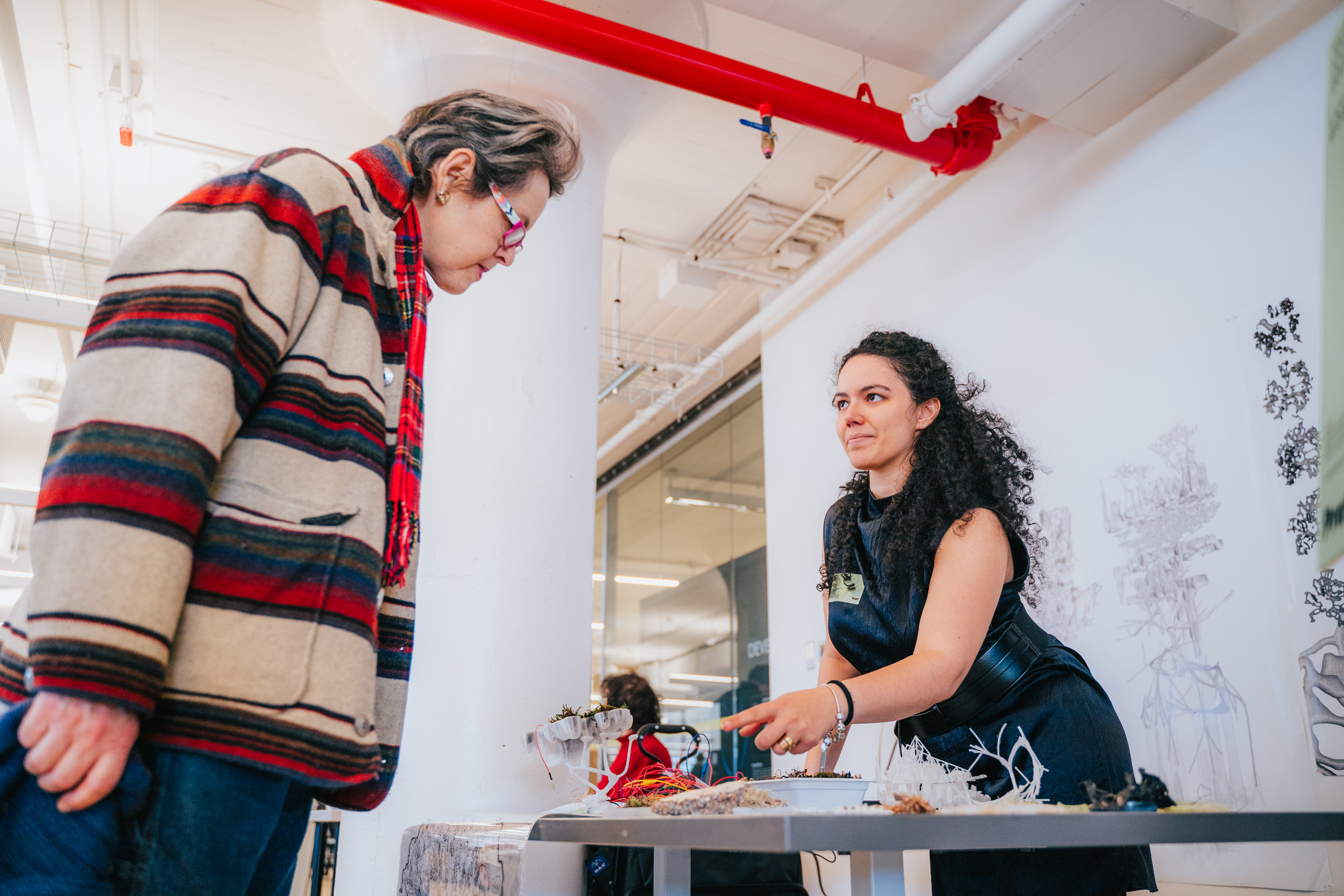
The Lichenized Biosystem integrates lichen as a living facade, fostering a symbiotic relationship that includes humans, nature, and architectural structures. The proposed module is composed of lichen growing on biomaterials, in conjunction with biofuel cells generating electricity, forming an integrated facade panel. By symbiotically integrating lichens into building exteriors through a modular facade system, we can redefine what urban ecosystems consist of, transforming buildings into carbon sinks, enhancing ecological benefits for a carbon-neutral future. Moving beyond superficial greenwashing practices on facades that rely on traditional plant care, this approach fosters a mutualistic relationship, enabling mutual survival and support.
Lichen—a symbiotic combination of mycelium and algae—that excels in extreme conditions, outperforms forests in CO2 sequestration, capturing a quarter of the Earth’s CO2 turning it into oxygen.Through only growing on 8% of earth’s surface it produces 50% of the nitrogen for organic life. Through the integration of this resilient and important organism we can create a symbiotic coexisting envelope system on urban structures.
Integrating lichen onto building facades can transform buildings into living systems that not only support but enhance our environment. By adopting Lichenized Biosystems for facades, using bio-substrates made of single-life materials and biofuel cells, we can convert buildings from carbon-emitting structures to carbon sinks. We can enhance lichens’ ecological benefits for a carbon-positive future instead of removing them from our facades.
A porous structure would be conducive for lichen growth, thriving on various surfaces including metal, leather, and building exteriors. In polluted urban settings, an initial carbon aerated layer to protect lichen from direct pollution is recommended until they stabilize and positively affect air quality.
Lichen cultivation plates are designed to be removable and replaceable, facilitating maintenance and ensuring continuity in case of die-offs but most times dormancy occurs instead until conditions are favorable for regrowth.
Beneath the lichen, an enzymatic biofuel cell within the module functions as a power source for the building. It features a graphite underlayer and an agar-based biofilm acting as a cathode to harness enzyme electrons from lichen photosynthesis, converting them into energy.
An underlying substrate of bioplastics made of agar and conductive hydrogel supports the fuel cell, incorporating single -life materials like bricks and biodegradable waste. This layer serves as an anchor for lichen growth from its porosity.
The module’s bottom layer integrates with the building, enabling a symbiotic relationship, energy connection and communication between humans and lichen, promoting continuous coexistence.
“Lichen are fungi that have discovered agriculture” Trevor Goward a lichenologist. This is the best description for Lichen.
Lichen, existing in three types (Foliose, Crustose, Fruticose) and over 20,000 species, is among the planet’s oldest life forms, dating back over 440 million years. Found globally in diverse climates from cold to hot, lichen is easily accessible worldwide. Despite its ubiquity, lichen remains less understood and studied compared to moss, often appearing as a hybrid of tiny fungi due to its symbiotic nature, involving mycelium (fungi) and algae. It all just looks similar at first to the human eye until you look closer.
Within the Foliose family is the Shield lichen (Parmelia sulcata), known for its rapid growth and ability to establish anywhere, is among the most prevalent species you’re likely to encounter. It appears as green patches on tree bark, resembling algae or moss. This lichen boasts a global distribution, spanning from the Arctic to the Antarctic but is primarily found in temperate regions. With around 40 species, shield lichen is especially common in many areas, including New York City, making it a familiar sight to many and the reason why it’s a good contender for this facade system.
The symbiosis of this system stems from the lichen’s structure itself, as it is composed of mycelium that can “lichenize” through capturing algae or cyanobacteria. Mycelium, the fungal component, provides shelter for the algae, traps water, and protects it from harmful UV rays. In return, the algae supplies the mycelium with the sugars it needs to survive, enabling it to thrive in diverse environments. Lichen’s ability to live without soil, withstand minimal water (going dormant if not enough), and adapt to varying humidity levels showcases its versatility.
This symbiosis enables lichen to thrive in extreme environments, from Antarctica to deserts, even surviving in space, making it incredibly resilient especially with climate change. Remarkably, some Arctic lichen have been recorded as the world’s oldest living organisms at 8,600 years old, with the ability to photosynthesize in freezing conditions. It can even be used to date objects that have been around for a long time.
NASA’s experiment, exposing lichen to space radiation and observing its survival, highlights its potential significance in understanding resilience to climate extremes and space exploration. That’s when I first realized this is an organism to be aware of.
In summary, the deployment of Lichenized Biosystems on building exteriors, coupled with the use of recycled materials for bio-substrates and biofuel cells, marks a significant step towards transforming buildings into carbon sinks. This approach not only promises a carbon-neutral future but also creates a shift in architectural practices. By embracing lichens, we foster symbiotic ecosystems that contribute to emission reduction and enhance urban structures with coexisting envelope systems. This project, a culmination of my 2023 fall fellowship at the Institute for Public Architecture on Governors Island, aims to show the importance of merging cutting-edge systems with nature. Through an interactive model designed to spark public engagement and foster learning, my goal is to spread awareness about the critical role of integrating sustainable technologies into our built environment, driving a deeper connection between urban development and ecological stewardship.
